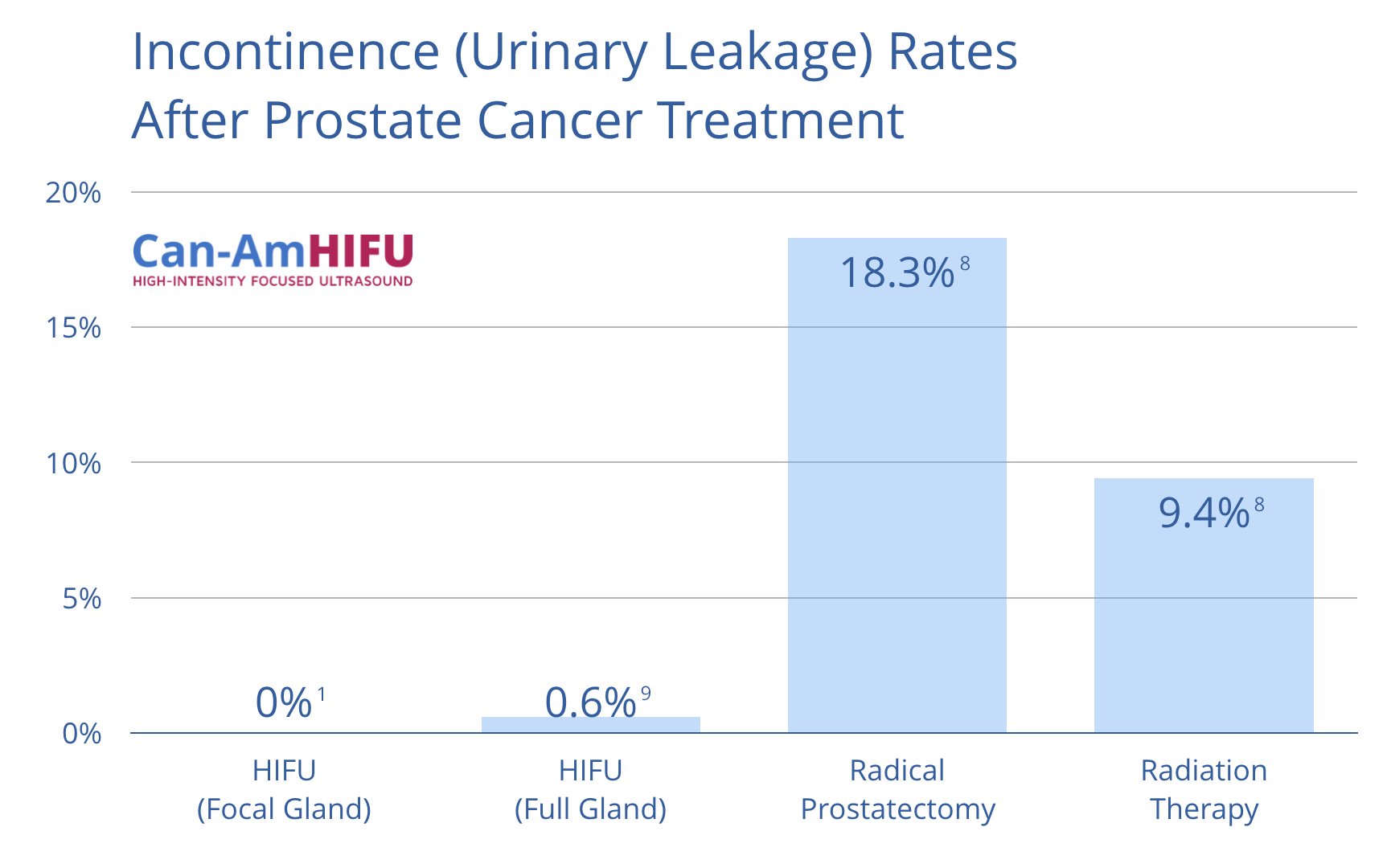Focal Therapy for Localised Unifocal and Multifocal Prostate Cancer: a Prospective Development Study. Ahmed, Hashim U, Richard G Hindley, Louise Dickinson, Alex Freeman, Alex P Kirkham, Mahua Sahu, Rebecca Scott, Clare Allen, Jan Van der Meulen, and Mark Emberton. The Lancet Oncology 13, no. 6 (June 2012): 622–632.
Focal Therapy for Localized Prostate Cancer: A Phase I/II Trial. Ahmed, H.U., A. Freeman, A. Kirkham, M. Sahu, R. Scott, C. Allen, J. Van der Meulen, and M. Emberton. The Journal of Urology 185, no. 4 (April 2011): 1246–1255.
Transrectal High-intensity Focused Ultrasound for the Treatment of Localized Prostate Cancer: Eight-year Experience. Uchida, Toyoaki, Sunao Shoji, Mayura Nakano, Satoko Hongo, Masahiro Nitta, Akiko Murota, and Yoshihiro Nagata. International Journal of Urology 16, no. 11 (2009): 881–886.
High-intensity-focused Ultrasound in the Treatment of Primary Prostate Cancer: The First UK Series. Ahmed, H. U., E. Zacharakis, T. Dudderidge, J. N. Armitage, R. Scott, J. Calleary, R. Illing, et al. British Journal of Cancer 101, no. 1 (2009): 19–26.
Transrectal High-intensity Focused Ultrasound for Treatment of Localized Prostate Cancer. Inoue, Yoji, Keisuke Goto, Tetsutaro Hayashi, and Mutsuo Hayashi. International Journal of Urology 18, no. 5 (2011): 358–363.
Visually Directed Transrectal High Intensity Focused Ultrasound for the Treatment of Prostate Cancer: a Preliminary Report on the Italian Experience. Mearini, Luigi, Leonardo D’Urso, Devis Collura, Alessandro Zucchi, Elisabetta Costantini, Andrea Formiconi, Vittorio Bini, Giovanni Muto, and Massimo Porena. The Journal of Urology 181, no. 1 (January 2009): 105–111; discussion 111–112.
Visually directed high-intensity focused ultrasound for organ-confined prostate cancer: a proposed standard for the conduct of therapy. Rowland O. Illing*†, Tom A. Leslie‡, James E. Kennedy‡, John G. Calleary*, Christopher W. Ogden§ and Mark Emberton*† *The Institute of Urology and Nephrology, University College London, London, †The Clinical Effectiveness Unit, The Royal College of Surgeons of England, London, ‡Department of Urology, The Churchill Hospital, Oxford, and §Department of Urology, Chelsea and Westminster Hospital, London, UK Accepted for publication in British Journal of Urology 27 July 2006.
Five Year Experience of transrectal high-intensity focused ultrasound using the Sonablate device in the treatment of localized Prostate cancer. Toyoaki Uchida, Hiroshi ohkusa, Hideyuki Yamashita, Sunao Shojl, Yochihiro Nagata, Toru Hyodo and Takefumi Satoh. International Journal of Urology, Vol. 13, 228-233. 2006.
Outcome Analysis of High Intensity Focused Ultrasound for clinically localized prostate cancer in Japan- Seven-Year Follow-Up. Makoto Suzuki, M.D., Toyoaki Uchida, M.D., Toshiro Terachi, M.D..: Tokyo, Japan. (Presentation made by Dr. Suzuki at Western Sectional AUA Meeting in Maui, June 2006) Visually Directed HIFU for Prostate Cancer –a new standard. Rowland O. Illing**, Sam Dawkins*, Chris W. Ogden* and Mark Emberton**. *Institute of Urology and Nephrology, University College Hospital, London, UK ** The Clinical Effectiveness Unit, The Royal College of Surgeons of England, London, UK
Treatment of localized prostate cancer using high-intensity focused ultrasound. Toyoaki Uchida. Dept. of Urology University of Tokai Hachioji Hospital. British Journal of Urology International 2006.
Prostate Cancer Therapy with High-Intensity Focused Ultrasound -Comprehensive Review Thomas A. Gardner and Michael A Koch, Indiana University Medical Center, Indianapolis. Clinical Genitourinary Cancer Vol 4. No.3, 2005.
Transrectal High-Intensity Focused Ultrasound in the treatment of Localized Prostate Cancer: A Multicenter Study. Acta Urol. Jpn. 51 651-658, 2005. Toyoaki Uchida. The Dept. of Urology, Tokai University Hachioji Hospital.
High Intensity Focused Ultrasound for the Treatment of Localized Prostate Cancer. A Multi-Center Experience. George M Suarez*, Miami, FL; Rafael Estrella, Santiago De los Caballeros, Dominican Republic; Carlos Garcia, Puerto Vallarta, Mexico. Abstract from Presentation given at The 15th International Prostate Cancer Conference in Vail, Colorado, February 2005
Transrectal HIFU: The Next Generation? Prostate Cancer Research Institute (PCRI) Insights. Douglas O. Chinn, MD Chinn & Chinn Urology Medical Associates, Arcadia, CA February 2005. Pages 8-15.
Clinical Outcome of HIFU for the Treatment of localized prostate cancer: 5-year Experience. Toyoaki Uchida, Hiroshi Ohkusa, Hideyuki Yamashita, Yoshihiro Nagata Department of Urology, Tokai University Hachioji Hospital. Abstract – ISTU 2004
Clinical Outcome of HIFU for Localized Prostate Cancer: 5 year Observations. Toyoaki Uchida, E. Yamashita, Y. Okusa, T. Nagata, Tokai University, Tokyo, Japan. Podium presentation given at the 2004 Japan Endourology and ESWL Conference, Okayama, Japan November, 2004.
High Intensity Focused Ultrasound for Prostate Cancer: Clinical Results and Technological Evolution John C. Rewcastle, Ph.D. Department of Radiology, University of Calgary Alberta, Canada Quality of Life in Patients with High Intensity Focused Ultrasound (HIFU) for localized Prostate Cancer. Toyoaki Uchida, E. Yamashita, Y. Okusa, T. Nagata, Tokai University, Tokyo, Japan. Podium presentation given at the 2004 Japan Endourology and ESWL Conference, Okayama, Japan November, 2004.
Transrectal High-Intensity Focused Ultrasound for treatment of patients with Stage Tib-2N0M0 localized Prostate Cancer: A Preliminary Report. Presentation of preliminary clinical results of transrectal HIFU in stage T1b-2N0M0 prostate cancer. Dr. T Uchida, M.D.
Localized Prostate Cancer Treatment by High Intensity Focused Ultrasound (HIFU): Preliminary Results. Toyoaki Uchida M.D., Department of Urology, Kitasato University, Tokyo, Japan. This summary has been abstracted from previously published work and supplemented by additional new treatment data prepared by Dr. T. Uchida, M.D. by Focus Surgery, Inc.
Noninvasive Surgery of Prostate Tissue by High Intensity Focused Ultrasound: An Updated Report. European Journal of Ultrasound. N. T. Sanghvi 2,*, R. S. Foster1, R. Bihrle1, R. Casey3, T. Uchida4, M. H. Phillips2, J. Syrus2, and A. V. Zaitsev2 , K. W. Marich2 , F. J. Fry


